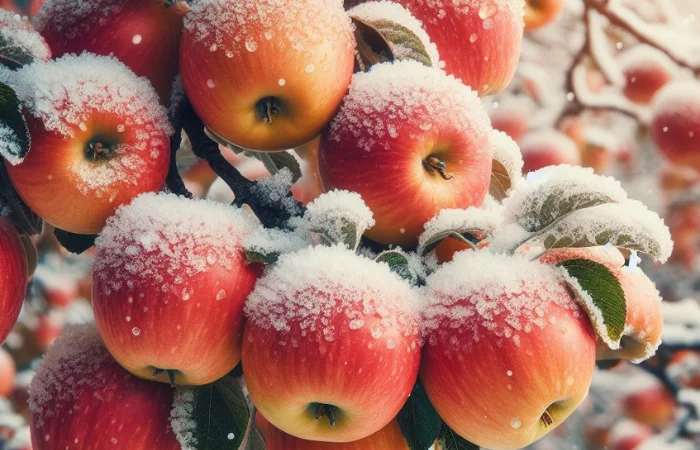Residents of Michigan may be noticing an unusual sight this year – more apples left hanging on the trees in orchards. Surprisingly, this decision isn’t driven by a lack of demand for apples, but rather a complex interplay of economic and environmental factors that have led growers to leave some of their bountiful harvest unharvested.

Nick Schweitzer, Operations Manager at Schweitzer Orchards, sheds light on the situation. While orchards strive to harvest as much of their crop as possible, this year’s robust apple supply and rising labor costs have shifted the financial calculus.
“Anything that was below a certain size, we had to leave on the tree because there probably wasn’t a market for it,” Schweitzer explains. “So, we don’t want to incur those costs to have to try and store it or dump it later on.”
The abundance of apples in storage this year has led to prioritizing the most profitable ones due to limited storage space.
Schweitzer elaborates, “This year, there was a really good crop overall throughout Michigan, and we had to be very picky in terms of what we were actually picking off the trees because there are certain specs that we have to meet for customers like grocers, size requirements, color requirements, quality.”
Beyond economic considerations, orchards also face challenges posed by cold weather.
“When you get temperatures that drop into the mid-20s, then you have that frost-thaw period. With fruit, it ruptures the cells within the apple, and it really makes for a poor eating experience. So, we couldn’t harvest them for fresh,” Schweitzer highlights. “And there’s no market really for extra processing this year, so it’s not worth harvesting anything that’s still out on the trees.”

Katie Vargas, a board member with USApple and part of Joe Rasch Orchards in Alpine Township, Michigan, has her own insights to offer. She reveals that for the first time, her family farm near Sparta did not harvest 10% to 15% of its crop, primarily due to soaring labor costs, which have surged by approximately 40% over the past five years. “Part of that is a wage that is set by the Department of Labor. This year, it was $17.34,” Vargas points out. “And so, on the other end of that, we also don’t set our prices for our product.”
However, the apples that remain on the trees won’t go to waste. Vargas explains, “The fruit will start to decay and eventually drop off the tree around the root zone. And that will decay, and those nutrients will remain in the ground.”
According to Michigan State University, apples are the largest fruit crop in Michigan, with over 900 million pounds produced each year.
The state ranks as the third-largest apple producer in the United States, following only Washington and New York, according to the U.S. Department of Agriculture.
Despite the challenges faced by orchards this year, it’s clear that the decision to leave apples on the trees reflects a nuanced response to changing economic and environmental dynamics in the industry.




















